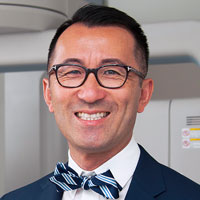This session will focus on the key radiologic features of 10 entities; some that are common, some that are important, and others that are critical. Some findings may be variants of normal anatomy or hamartomas that may require little action or urgency. But others may necessitate a more timely definitive diagnosis and more immediate management, including referral. Understanding the biological nature of such abnormalities may help guide management and facilitate patient communication.
Learning Objectives:
- Develop a systematic strategy for investigating a radiologic anomaly or abnormality.
- Identify the key radiologic features of common anomalies or abnormalities.
- Understand the urgency of a radiologic finding.
- The speakers have no financial interests that would create a conflict of interest or restrict their judgement with regard to the content of this presentation.
- Case images are property of the speaker unless otherwise noted.
